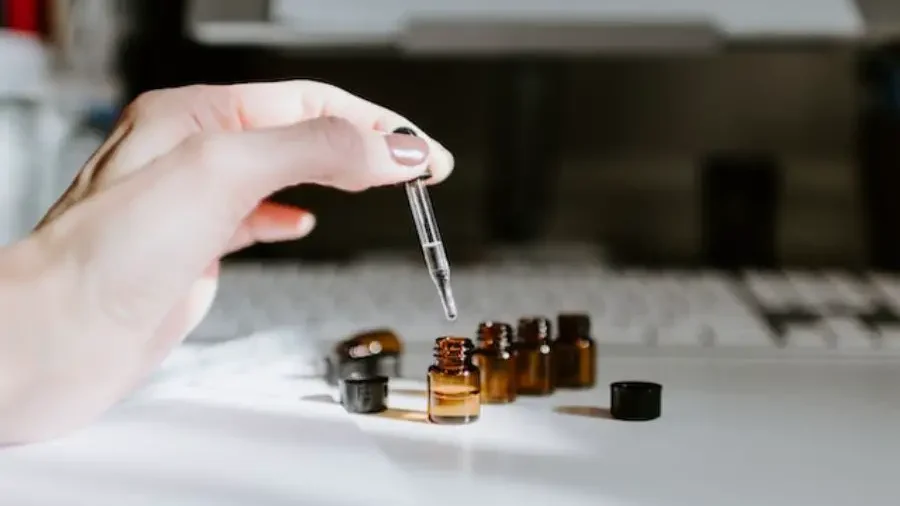Homemade Gypsy Moth Spray – Guide
Gypsy Moth Caterpillars damage many crops and different tree species in the forests.
Unfortunately, the trees in our backyard can’t escape them either.

Dealing with these insects is unlike any other; therefore, it is essential to choose the right tool. It is best to handle their growth at the hibernating stage (moth eggs). These insects come out of hibernation at the beginning of the summer and grow exponentially.
It could be challenging to tackle the problem after this stage.
Scrutinize your backyard to identify the gypsy moth invasion well before summer. The eggs are also reasonably easy to identify as females cover them with visible hairs. The caterpillar stage is the most harmful because these destroy leaves and destroy leaves all day.
However, the good news is that it is possible to control this problem with little effort.
Let’s learn about some practical and effective homemade gypsy moth sprays.
Types of Homemade Gypsy Moth Spray
The homemade gypsy moth sprays usually contain natural ingredients but aren’t harmless. You should be careful when using these sprays as they could easily splash back into your face and cause irritation.
The most prevalent qualities of these sprays include applicability and cost-effectiveness. They are also good for the environment.
Guide to the preparation of some homemade or natural way gypsy moth spray is given below:
1. Soap solution
A simple solution composed of soap and water is an excellent homemade insecticidal spray. Using hard water (rich in calcium, magnesium, and iron) reduces the effectiveness of the soap.
Thus, prefer distilled or bottled water when making the solution to get good results.
Ingredients
- Soap
- Water
- Jar with lid
- Knife or scraper
- Gloves
- Face masks
Recipe
Take about 2 cups of hot water and add three tablespoons of organic soap. Mix the solution well till the soap gets wholly dissolved in the water.
Use a knife to scrape off the egg masses from the tree. Try not to damage the bark while scraping. Put the eggs in the soapy solution. It is recommended not to spray the soap solution at the nests directly.
Leave the eggs in the solution for about 48 hours to get rid of them all. The soapy water would suffocate and kill immobile pupa and spongy adult moths.
Crushing the scraped eggs under boots fails to kill all the individuals. Therefore, the soap solution is an ideal choice in this situation.
2. Vinegar
Vinegar shows remarkable properties against many garden pests, including gypsy moths. The acidic nature of vinegar might damage some plant species.
Therefore, it is essential to identify the strength of your trees and apply this solution only at the targeted areas where there are nests (eggs) or caterpillars.
Ingredients
- Vinegar
- Water
- Liquid soap
- Spray bottle
- Gloves and face mask
Recipe
The ideal solution contains one cup of vinegar, three cups of water, and one teaspoon of liquid soap. In other words, take a bottle and add one ounce of vinegar for every three ounces of water to get the desired concentration.
This formulation is ideal for diluting the vinegar at a level that its acidity levels don’t harm the plants. Tightly close the spray bottle and target the area with egg masses. Use the spray directly to get excellent results.
The insects aren’t fond of the smell or taste of the vinegar.
You can use apple cider vinegar or white vinegar, but an ideal choice would be white vinegar because it’s cheaper.
3. Neem Oil

Neem oil is a natural pesticide that helps eliminate various plant pests, including gypsy moths. The best time for its application is early morning or late evening. This spray in the afternoon’s shining sun could burn the sprayed foliage.
Neem oil, as an insecticide, disturbs the moth’s normal life cycle resulting in early death.
Organic farmers and home gardeners are fond of this natural insect repellent.
Ingredients
- Neem oil
- Water
- Liquid soap
- Spray bottle
Recipe
Add four teaspoons of neem oil and two teaspoons of liquid soap to a gallon of water to make an essential neem oil insect-repellent spray.
Always shake the solution well and apply it directly to the targeted insect.
The neem oil spray is also available commercially, but it isn’t as safe and effective as the homemade one.
4. Vegetable Oil
Vegetable oil mixed in water is another efficient and environment-friendly homemade spray against gypsy moths. The ingredients are readily available at home; however, getting your hands on the backpack sprayer may take time and effort.
But this would help eliminate eggs present at heights, so it would be worth buying.
Ingredients
- A backpack sprayer (available at most Home Hardware or Home Depot)
- Hand-held spray bottle
- Vegetable oil
- Emulsifier (organic soap)
- Rain suit and gloves
- Full face shield
Recipe
Mix equal amounts of water and vegetable oil in the backpack tank. Add some emulsifier (soap) to ensure that water and oil are mixed well. Choosing an emulsifier doesn’t have to be tricky.
Any ordinary dishwashing soap would do the job. Only one tablespoon of emulsifier would be sufficient for a full 4-gallon tank. You can add food coloring to the solution to keep track of the sprayed spots.
The backpack sprayer comes with different nozzles; choose the one that lets you target the nests. The tighter nozzle would blast the nests, which is not recommended.
Spray wholly and generously soak the nests to get efficient results. The spray would suffocate the eggs in the nest.
The backpack sprayer comes in handy when dealing with nests at the height, but you can also make the same solution in small hand-held spray bottles if you’re dealing with nests at the bottom of the trees.
5. Organic Spray

The organic spray made with bacteria is a natural repellent that attacks and kills the eggs or baby caterpillars.
This spray’s biological nature makes it safe for fruit trees. The bacteria are readily available in stores as Bt for Caterpillars (Thuricide).
Ingredients
- Thuricide
- Water
- Soap
- Backpack sprayer
- Jar or bottle
Recipe
Add a gallon of water to the backpack sprayer and one to four tablespoons of bacteria. Mix the material properly, and you’ll notice a color change, indicating that the solution is ready. Spray the trees thoroughly and let the solution sit while bacteria naturally eat away eggs and caterpillars.
This spray should be repeated weekly, especially when expecting a moth attack. This spray will only partially get rid of the moths. An ideal choice would be to go back and handpick the caterpillar that survived bacteria.
Prepare a soapy solution in a jar and put the collected insects into the solution.
Conclusion
Homemade gypsy moth sprays or gypsy moth control are environment-friendly and, at the same time, affordable. You can choose from many options, from neem oil to bacterial organic sprays.
The method of preparation and application of these sprays is straightforward. You can follow the guide above and prepare spray to save your plants from moth attacks.
Gypsy moths are one of the most invasive pests; therefore, getting rid of them could be problematic with time.
Try to get the situation under control as soon as possible. Leave no eggs or moths alive at early stages, as they would turn into leaf-eating caterpillars and destroy plants.
Moreover, using the recommended concentrations increases your chance of getting the ideal and most effective spray solutions.